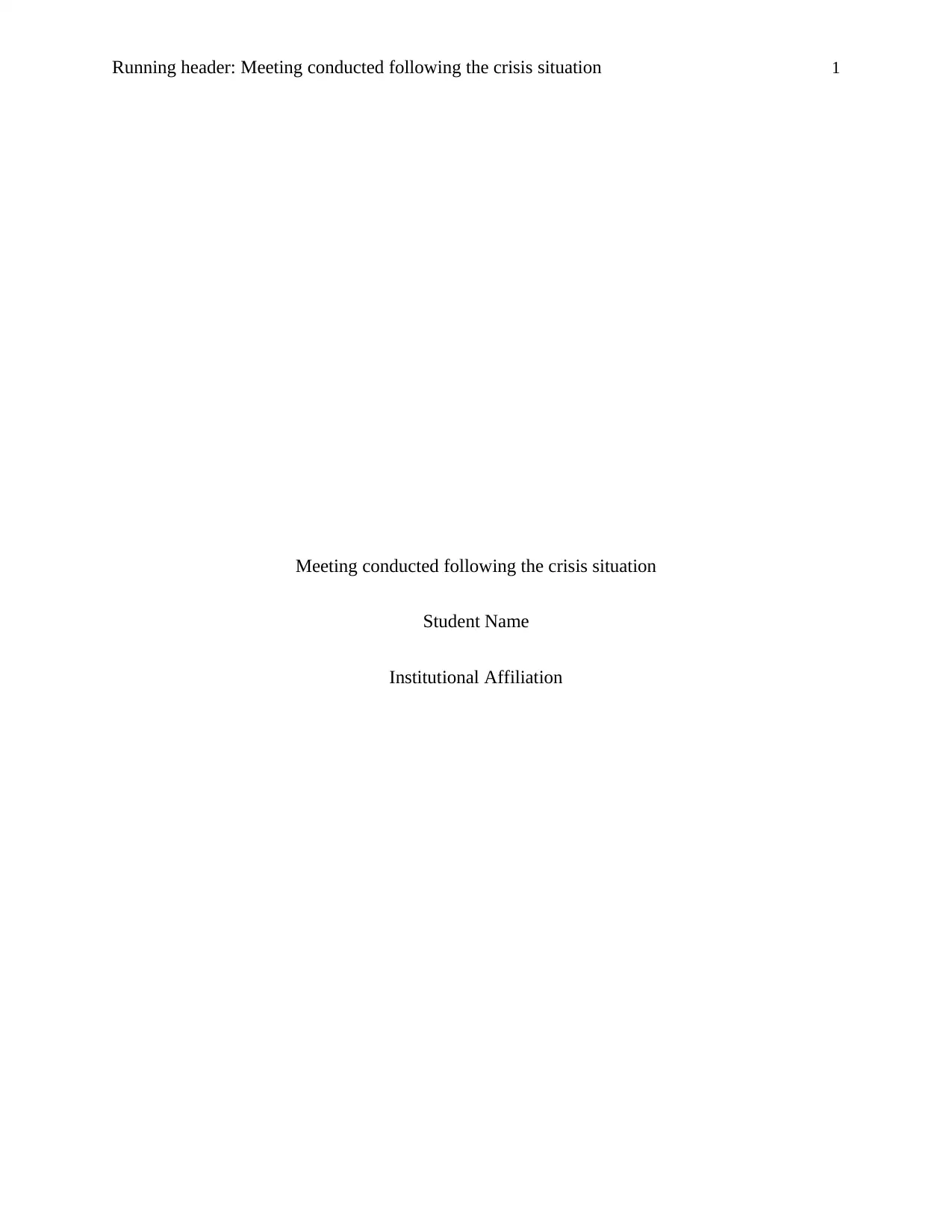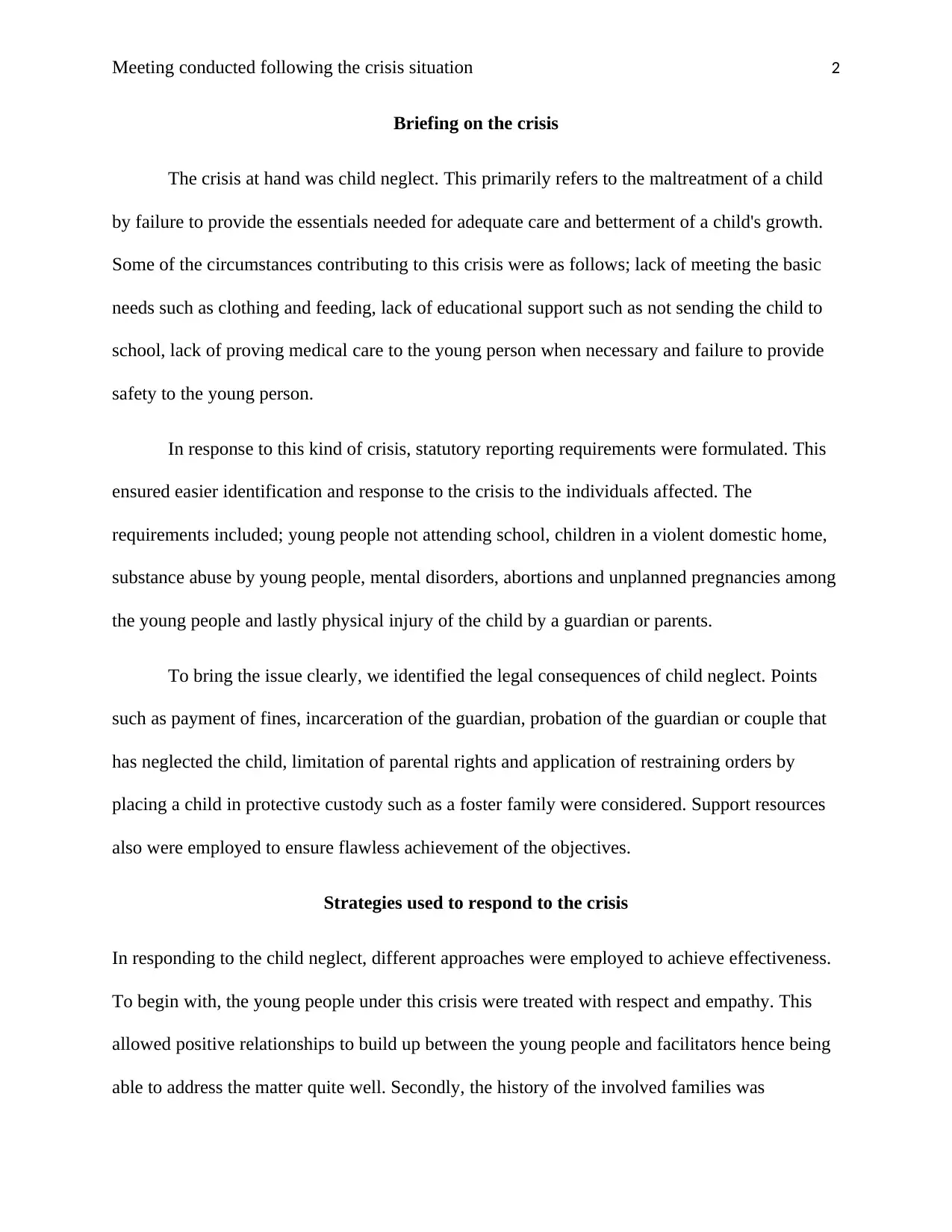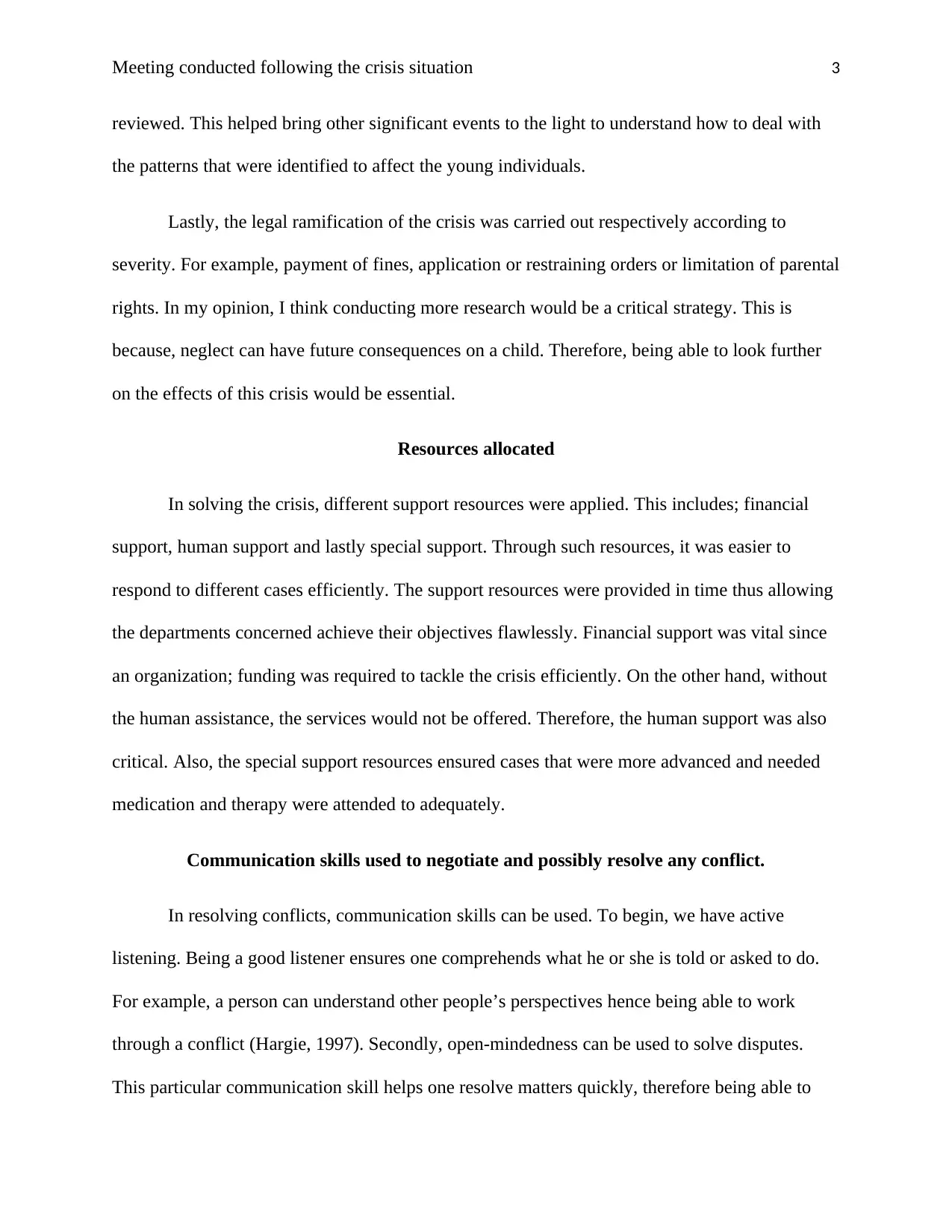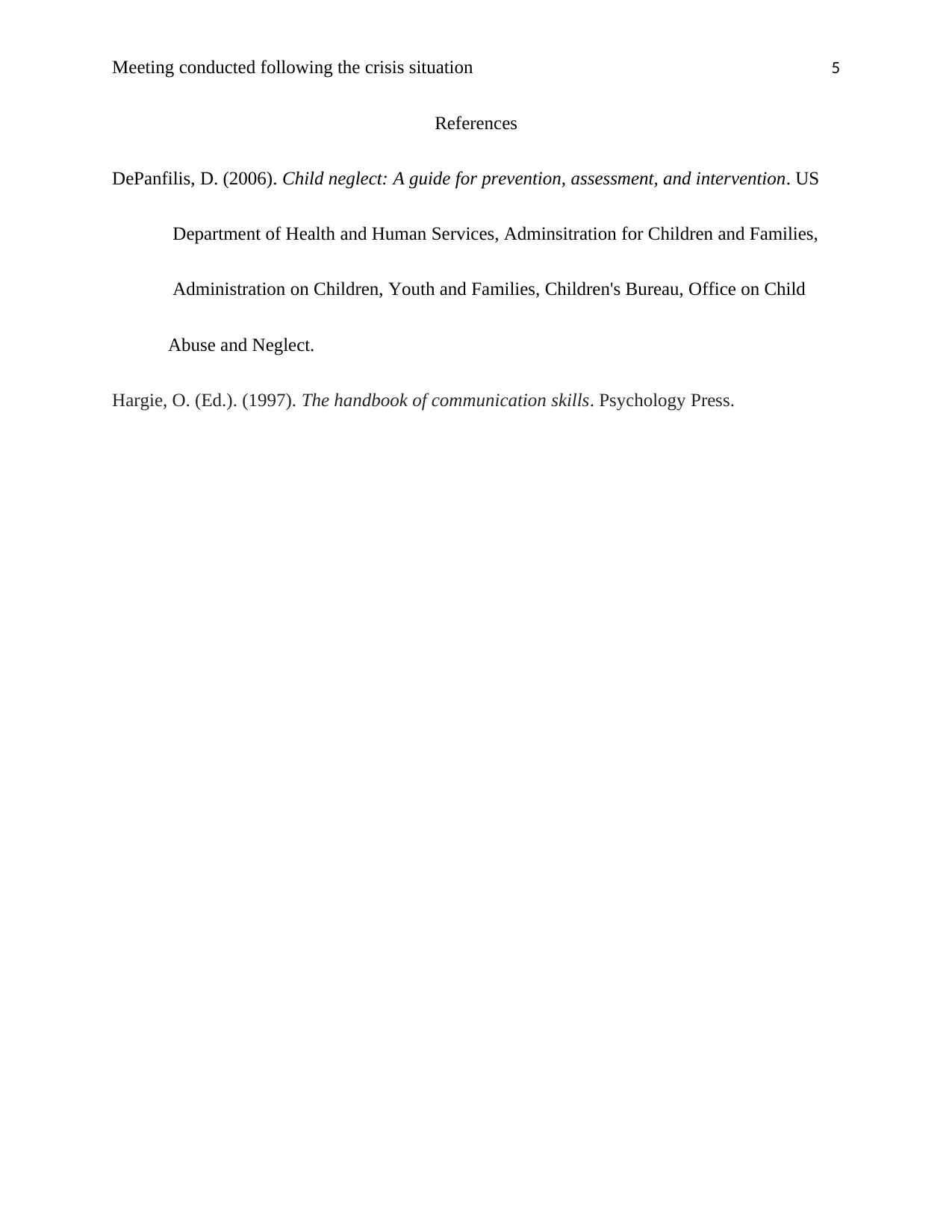CHCYTH012 TAFE Queensland: Crisis Meeting Report-Youth Services
VerifiedAdded on 2023/06/10
|5
|792
|252
Report
AI Summary
This report details a meeting conducted in response to a child neglect crisis, outlining the contributing circumstances, statutory reporting requirements, and legal consequences. The response strategies included treating young people with respect and empathy, reviewing family histories, and applying legal ramifications according to severity. Support resources such as financial, human, and special support were allocated to address the crisis effectively. Communication skills like active listening, open-mindedness, and respecting others' ideas were utilized to negotiate and resolve conflicts. The report also suggests further research into the long-term effects of neglect as a critical strategy for future interventions. This document is available on Desklib, where students can find a variety of study resources.
1 out of 5









![[object Object]](/_next/static/media/star-bottom.7253800d.svg)